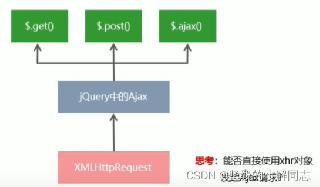python GUI框架pyqt5 對(duì)圖片進(jìn)行流式布局的方法(瀑布流flowlayout)
流式布局
流式布局,也叫做瀑布流布局,是網(wǎng)頁中經(jīng)常使用的一種頁面布局方式,它的原理就是將高度固定,然后圖片的寬度自適應(yīng),這樣加載出來的圖片看起來就像瀑布一樣整齊的水流淌下來。
pyqt流式布局
那么在pyqt5中我們怎么使用流式布局呢?pyqt沒有這個(gè)控件,需要我們自己去封裝,下面是流式布局的封裝代碼。
class FlowLayout(QLayout): def __init__(self, parent=None, margin=0, spacing=-1): super(FlowLayout, self).__init__(parent) if parent is not None: self.setContentsMargins(margin, margin, margin, margin) self.setSpacing(spacing) self.itemList = [] def __del__(self): item = self.takeAt(0) while item: item = self.takeAt(0) def addItem(self, item): self.itemList.append(item) def count(self): return len(self.itemList) def itemAt(self, index): if index >= 0 and index < len(self.itemList): return self.itemList[index] return None def takeAt(self, index): if index >= 0 and index < len(self.itemList): return self.itemList.pop(index) return None def expandingDirections(self): return Qt.Orientations(Qt.Orientation(0)) def hasHeightForWidth(self): return True def heightForWidth(self, width): height = self.doLayout(QRect(0, 0, width, 0), True) return height def setGeometry(self, rect): super(FlowLayout, self).setGeometry(rect) self.doLayout(rect, False) def sizeHint(self): return self.minimumSize() def minimumSize(self): size = QSize() for item in self.itemList: size = size.expandedTo(item.minimumSize()) margin, _, _, _ = self.getContentsMargins() size += QSize(2 * margin, 2 * margin) return size def doLayout(self, rect, testOnly): x = rect.x() y = rect.y() lineHeight = 0 for item in self.itemList: wid = item.widget() spaceX = self.spacing() + wid.style().layoutSpacing(QSizePolicy.PushButton,QSizePolicy.PushButton, Qt.Horizontal) spaceY = self.spacing() + wid.style().layoutSpacing(QSizePolicy.PushButton,QSizePolicy.PushButton, Qt.Vertical) nextX = x + item.sizeHint().width() + spaceX if nextX - spaceX > rect.right() and lineHeight > 0: x = rect.x() y = y + lineHeight + spaceY nextX = x + item.sizeHint().width() + spaceX lineHeight = 0 if not testOnly: item.setGeometry(QRect(QPoint(x, y), item.sizeHint())) x = nextX lineHeight = max(lineHeight, item.sizeHint().height()) return y + lineHeight - rect.y()
封裝好的流式布局類,我們只要傳入相應(yīng)的layout之后,他就會(huì)自動(dòng)計(jì)算頁面的元素,適應(yīng)頁面的寬度。
下面是我們寫的一個(gè)瀑布流顯示圖片的代碼:
from PyQt5.QtCore import QPoint, QRect, QSize, Qtimport osfrom PyQt5 import QtCore, QtGui, QtWidgetsfrom PyQt5.QtWidgets import ( QApplication, QLayout, QPushButton, QSizePolicy, QWidget, QGridLayout)class Window(QWidget): def __init__(self): self.imageheight = 100 super(Window, self).__init__() self.resize(400, 300) flowLayout = FlowLayout() highlight_dir = './' self.files_it = iter([os.path.join(highlight_dir, file) for file in os.listdir(highlight_dir)]) print() for file in iter(self.files_it): layout = QGridLayout() pixmap = QtGui.QPixmap(file) if not pixmap.isNull():autoWidth = pixmap.width()*self.imageheight/pixmap.height()label = QtWidgets.QLabel(pixmap=pixmap)label.setScaledContents(True)label.setFixedHeight(self.imageheight)print(autoWidth)label.setFixedWidth(autoWidth)#label.setFixedSize(100, 50)layout.addWidget(label)widget = QWidget()widget.setLayout(layout)flowLayout.addWidget(widget) self.setLayout(flowLayout) self.setWindowTitle('Flow Layout')class FlowLayout(QLayout): def __init__(self, parent=None, margin=0, spacing=-1): super(FlowLayout, self).__init__(parent) if parent is not None: self.setContentsMargins(margin, margin, margin, margin) self.setSpacing(spacing) self.itemList = [] def __del__(self): item = self.takeAt(0) while item: item = self.takeAt(0) def addItem(self, item): self.itemList.append(item) def count(self): return len(self.itemList) def itemAt(self, index): if index >= 0 and index < len(self.itemList): return self.itemList[index] return None def takeAt(self, index): if index >= 0 and index < len(self.itemList): return self.itemList.pop(index) return None def expandingDirections(self): return Qt.Orientations(Qt.Orientation(0)) def hasHeightForWidth(self): return True def heightForWidth(self, width): height = self.doLayout(QRect(0, 0, width, 0), True) return height def setGeometry(self, rect): super(FlowLayout, self).setGeometry(rect) self.doLayout(rect, False) def sizeHint(self): return self.minimumSize() def minimumSize(self): size = QSize() for item in self.itemList: size = size.expandedTo(item.minimumSize()) margin, _, _, _ = self.getContentsMargins() size += QSize(2 * margin, 2 * margin) return size def doLayout(self, rect, testOnly): x = rect.x() y = rect.y() lineHeight = 0 for item in self.itemList: wid = item.widget() spaceX = self.spacing() + wid.style().layoutSpacing(QSizePolicy.PushButton,QSizePolicy.PushButton, Qt.Horizontal) spaceY = self.spacing() + wid.style().layoutSpacing(QSizePolicy.PushButton,QSizePolicy.PushButton, Qt.Vertical) nextX = x + item.sizeHint().width() + spaceX if nextX - spaceX > rect.right() and lineHeight > 0:x = rect.x()y = y + lineHeight + spaceYnextX = x + item.sizeHint().width() + spaceXlineHeight = 0 if not testOnly:item.setGeometry(QRect(QPoint(x, y), item.sizeHint())) x = nextX lineHeight = max(lineHeight, item.sizeHint().height()) return y + lineHeight - rect.y()if __name__ == ’__main__’: import sys app = QApplication(sys.argv) mainWin = Window() mainWin.show() sys.exit(app.exec_())
到此這篇關(guān)于python GUI框架pyqt5 對(duì)圖片進(jìn)行流式布局的方法(瀑布流flowlayout)的文章就介紹到這了,更多相關(guān)python pyqt5圖片流式布局內(nèi)容請搜索好吧啦網(wǎng)以前的文章或繼續(xù)瀏覽下面的相關(guān)文章希望大家以后多多支持好吧啦網(wǎng)!
相關(guān)文章:
1. 關(guān)于JSP用戶登錄連接數(shù)據(jù)庫詳情2. ASP.NET MVC使用Identity增刪改查用戶3. Java 注解學(xué)習(xí)筆記4. 使用python tkinter開發(fā)一個(gè)爬取B站直播彈幕工具的實(shí)現(xiàn)代碼5. 關(guān)于JavaScript對(duì)象類型之Array及Object6. 以PHP代碼為實(shí)例詳解RabbitMQ消息隊(duì)列中間件的6種模式7. JSP頁面實(shí)現(xiàn)驗(yàn)證碼校驗(yàn)功能8. 原生Ajax之全面了解xhr的概念與使用9. ASP.NET MVC前臺(tái)動(dòng)態(tài)添加文本框并在后臺(tái)使用FormCollection接收值10. ThinkPHP5 通過ajax插入圖片并實(shí)時(shí)顯示(完整代碼)

 網(wǎng)公網(wǎng)安備
網(wǎng)公網(wǎng)安備